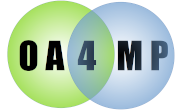

public class MyLoader<T extends ServiceEnvironmentImpl> extends OA4MPConfigurationLoader<T>{
public MyLoader(ConfigurationNode node){
super.node();
}
@Override
public T createInstance(){
T = super.createInstance();
MyTransformer mine; // Say your implementation is called MyTransformer
// create your transformer
t.setUsernameTransfomer(mine);
return T;
}
}
public class MyBootstrapper extends OA4MPBootstrapper{
@Override
public ConfigurationLoader getConfigurationLoader(ConfigurationNode node) throws MyConfigurationException {
return new MyLoader(node);
}
}
<listener>
<listener-class>path.to.MyBootstrapper</listener-class>
</listener>
<dependency>
<groupId>edu.uiuc.ncsa.myproxy</groupId>
<artifactId>oa4mp-webapp</artifactId>
<version>4.3</version>
<type>war</type>
<scope>runtime</scope>
</dependency>
<dependency>
<groupId>edu.uiuc.ncsa.myproxy</groupId>
<artifactId>oa4mp-server-api</artifactId>
<version>4.3</version>
</dependency>